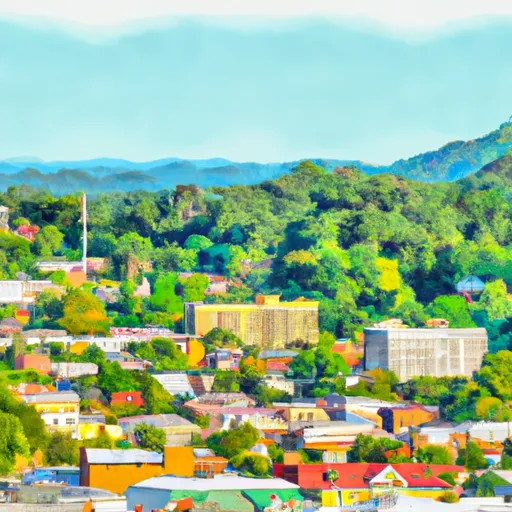-
 Snoflo Premium
Snoflo Premium
Get unlimited access to all our content
With no Ad interruptions! - Start Your Free Trial Login with existing account
Molena
Eden Index
Climate
8.0
•
Recreation
2.8
•
Community
•
Safeguard
4.2/10

Molena, Georgia is a small town located in Pike County, part of the state's Piedmont region. The climate in Molena is classified as humid subtropical, characterized by hot, humid summers and mild winters. Average temperatures range from the low 40s°F (4°C) in winter to the mid-90s°F (35°C) in summer.
The town is surrounded by beautiful natural landscapes, with the Flint River passing through the area. The hydrology constituents in Molena include the Flint River, which provides opportunities for fishing, kayaking, and canoeing. The river is also a popular spot for swimming and camping, allowing visitors to enjoy the natural beauty and serenity of the area.
In addition to the Flint River, Molena is surrounded by extensive forests and natural areas, providing ample opportunities for hiking, birdwatching, and wildlife observation. The area is home to a variety of species, including deer, turkey, and various bird species.
Overall, Molena, Georgia offers a pleasant climate, picturesque waterways, and abundant outdoor recreation opportunities, making it an attractive destination for nature lovers and outdoor enthusiasts.
What is the Eden Index?
The Snoflo Eden Index serves as a comprehensive rating system for regions, evaluating their desirability through a holistic assessment of climate health, outdoor recreation opportunities, and natural disaster risk, acknowledging the profound impact of these factors on livability and well-being.
Climate Health Indicator (CHI): 8.0
Molena receives approximately
1235mm of rain per year,
with humidity levels near 86%
and air temperatures averaging around
18°C.
Molena has a plant hardyness factor of
8, meaning
plants and agriculture in this region tend to thrive here all year round.
By considering the ideal temperature range, reliable water supplies, clean air, and stable seasonal rain or snowpacks, the Climate Health Indicator (CHI) underscores the significance of a healthy climate as the foundation for quality living.
A healthy climate is paramount for ensuring a high quality of life and livability in a region, fostering both physical well-being and environmental harmony. This can be characterized by ideal temperatures, reliable access to water supplies, clean air, and consistent seasonal rain or snowpacks.
Weather Forecast
Streamflow Conditions
Apalachicola
Area Rivers
Apalachicola
Snowpack Depths
Apalachicola
Reservoir Storage Capacity
Apalachicola
Groundwater Levels
Recreational Opportunity Index (ROI): 2.8
The Recreational Opportunity Index (ROI) recognizes the value of outdoor recreational options, such as parks, hiking trails, camping sites, and fishing spots, while acknowledging that climate plays a pivotal role in ensuring the comfort and consistency of these experiences.
Access to outdoor recreational opportunities, encompassing activities such as parks, hiking, camping, and fishing, is crucial for overall well-being, and the climate plays a pivotal role in enabling and enhancing these experiences, ensuring that individuals can engage in nature-based activities comfortably and consistently.
Camping Areas
| Campground | Campsites | Reservations | Toilets | Showers | Elevation |
|---|---|---|---|---|---|
| Upper Stamp Creek - Allatoona Lake | None | 926 ft | |||
| Doll Mountain - Carters Lake | None | 1,206 ft | |||
| Woodring Branch - Carters Lake | None | 1,142 ft | |||
| Clark Creek North - Allatoona Lake | None | 896 ft | |||
| Payne - Allatoona Lake | None | 848 ft | |||
| Victoria - Allatoona Lake | None | 897 ft | |||
| Dobbins Lakeside Military | None | 1,079 ft | |||
| Clark Creek South - Allatoona Lake | None | 858 ft | |||
| Sweetwater - Allatoona Lake | None | 896 ft | |||
| Harris Branch - Carters Lake | None | 1,230 ft |
Nearby Ski Areas
Catastrophe Safeguard Index (CSI):
The Catastrophe Safeguard Index (CSI) recognizes that natural disaster risk, encompassing floods, fires, hurricanes, and tornadoes, can drastically affect safety and the overall appeal of an area.
The level of natural disaster risk in a region significantly affects safety and the overall livability, with climate change amplifying these risks by potentially increasing the frequency and intensity of events like floods, fires, hurricanes, and tornadoes, thereby posing substantial challenges to community resilience and well-being.
Community Resilience Indicator (CRI):
The Community Resilience Indicator (CRI) recognizes that education, healthcare, and socioeconomics are crucial to the well-being of a region. The CRI acknowledges the profound impact of these elements on residents' overall quality of life. By evaluating educational resources, healthcare accessibility, and economic inclusivity, the index captures the essential aspects that contribute to a thriving community, fostering resident satisfaction, equity, and social cohesion.

